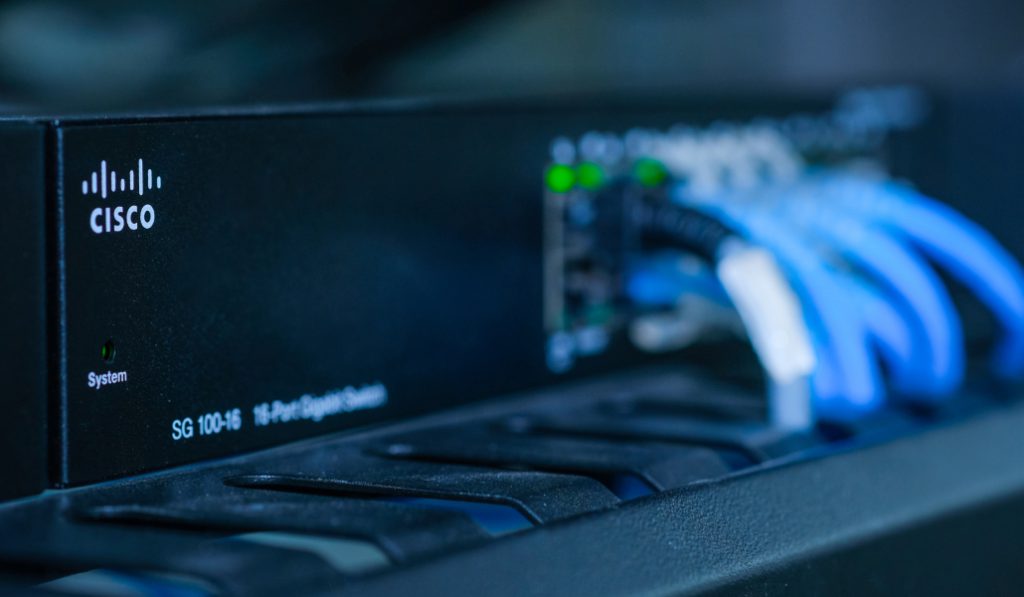Why good Data Cables And Management Are At The Heart Of Any Organisation

In a world that relies increasingly on data, the impacts of poor quality, non-compliant cables or inferior cable management systems can be devastating. Either one can lead to unplanned outages or system downtime resulting in lost or corrupt data, lost sales or lost clients – unwelcome issues in an age of ‘digital transformation’.
According to the International Data Corporation (IDC), it is anticipated that 75% of the world population, approximately 6 billion users, will have at least 1 data transaction every 18 seconds by 2025. Given the significance of these statistics it is clear why organisations around the globe are placing more and more emphasis on their data handling capabilities.
Today’s consumers are not only data hungry, they are also impatient. The escalating demand for data to be provided in real-time places greater expectation on all forms of enterprise and ensures the conversation surrounding data transmission rates remains a hot topic around many a board table. Facilities must be able to ensure their consumers have access to all of the services and information they require, when they require it.
Central to any organisation, it is the data centre that sits at the very heart of operations. This being the case, it could be considered that it is the data cables that act as the ‘veins’ and ‘arteries’ carrying information throughout the business and to the outside world. If there are issues with these vessels, the heart will simply not be able to work as it should.
The use of poor quality, non-compliant cables or substandard cable management techniques pose an unacceptable risk to data system failure. It is not an area that should be overlooked or where corners should be cut, yet unfortunately, perhaps unwittingly, many still do.
As network infrastructure specialists, Technology Powered Services (TPS) are often called on to assist with data transmission problems. The audits we perform will often highlight cabling issues that are having a negative effect, not just on how the network runs but also the overall energy efficiency of the entire system. It can often be the case that the only option for improving performance in these instances is to remove and replace large sections of non-compliant cable, resulting in time-consuming, expensive and unanticipated works that could have been entirely avoided.
Negative Impacts of Poor Data Cable Quality and Sub-standard Cable Management
The use of inferior cables and inadequate cable management processes give rise to an inefficient network, resulting in;
- Sub-standard system performance
- Poor user experience
- Decreased energy efficiency – non-approved cabling places increased power demands on the network due to the greater level of heat being generated within both the cabling and containment
- Overloaded cabling causes wires to overheat, resulting in reduced thermal and airflow management
- Enlarged carbon footprint
- Increased risk of data corruption and data loss
- Unscheduled business downtime due to power issues and system outages
- Reduced lifespan of cables and all associated infrastructure
- Increased operational costs
- Installations take longer and are subject to an increased rate of human error (due to jumbled and unidentified cables)
Effects of Good Data Cable Management
Good data cable management ensures that cables are properly organised and routed, which not only prevents the problems associated with tangling and damage but also reduces cable clutter. The practice safeguards cables from becoming overburdened, a problem that inevitably leads to overheating and increased power consumption.
Likewise, an effective management system will also help to reduce the length of the cables needed, which can help to minimise power loss due to cable resistance. Too long a cable will ultimately need more power to transmit the same amount of data over the longer distance than a shorter one and can also cause signal degradation issues.
Why are Approved Cables Better?
Certified cable manufacturers are assessed and approved on a number of factors. These include how the materials they use are purchased, how cable designs are validated, the company’s quality management systems and the processes by which they deal with non-conforming products. Aside from this there is a comprehensive audit trail to assess the key processes involved in the manufacture of each cable. This level of scrutiny ensures that the quality of output is guaranteed, minimising the risk of product failure at each stage of the manufacturing process.
A sample from each cable design will then undergo forensic examination to ensure all of the relevant specification parameters are satisfied and that the cable meets the required output performance level to comply with industry standards.
This level of certification, applied through a third-party, ensures that cables are able to consistently meet the required standards whereas non-approved cables cannot guarantee this level of quality and performance.
The progression of established standards, such as the International Electrotechnical Commission (IEC) and European Standards (EN) have imposed a greater level of requirement with respect to data integrity and immunity to electro-magnetic interference within structured cabling systems. These now specify key performance indicators within data cables, which include attenuation and crosstalk; factors concerning the loss of signal strength within a networking cable and the leakage of signals from one cable pair into another. These tests determine the level of interference experienced, which has a direct impact on the cable’s ability to transmit data without error whilst also ensuring the likelihood of infrastructure failure in future is considerably reduced.
Conclusion
Whilst initially less expensive, sub-standard cabling uses low quality components and bypasses the process controls and auditing as outlined above. As much as it may seem a considerably cheaper option in the short term, the inferior products and manufacturing will result in more power being used and thus more heat being produced into the surrounding environment. In turn this places an increased energy demand on the network, reducing the lifespan of the cables and increasing the risk of downtime, or potential failure, throughout the associated infrastructure.
Approved cabling together with a system for the proper management of cables will however ensure that all manufacturing key performance indicators are met and that cables remain correctly ventilated to reduce the threats posed from overheating and power issues.
As data usage continues to rise; data uptime, space and efficiency will all remain premium factors within the network infrastructure. Maintaining quality at each stage of the chain through the use of independently approved cables, effective infrastructure designs and superior cable management processes are the only ways to ensure the heart of the network continues to beat as it should.
TPS offer a variety of network infrastructure and cable management solutions designed with superior performance, uptime and scalability in mind. Our systems offer increased return on investment, lowering overall operational expenses and helping to reduce carbon footprint.
If you would like further information, please call a member of the TPS team on 0161 660 9974 or email sales@techpoweredservices.com
TPS (Technology Powered Services) has an industry wide reputation for delivering exceptional infrastructure, connectivity and technological solutions. The company also offers a comprehensive range of Break-Fix, Testing and Maintenance services including reactive 24/7 Engineer Call-Out with guaranteed response times.

